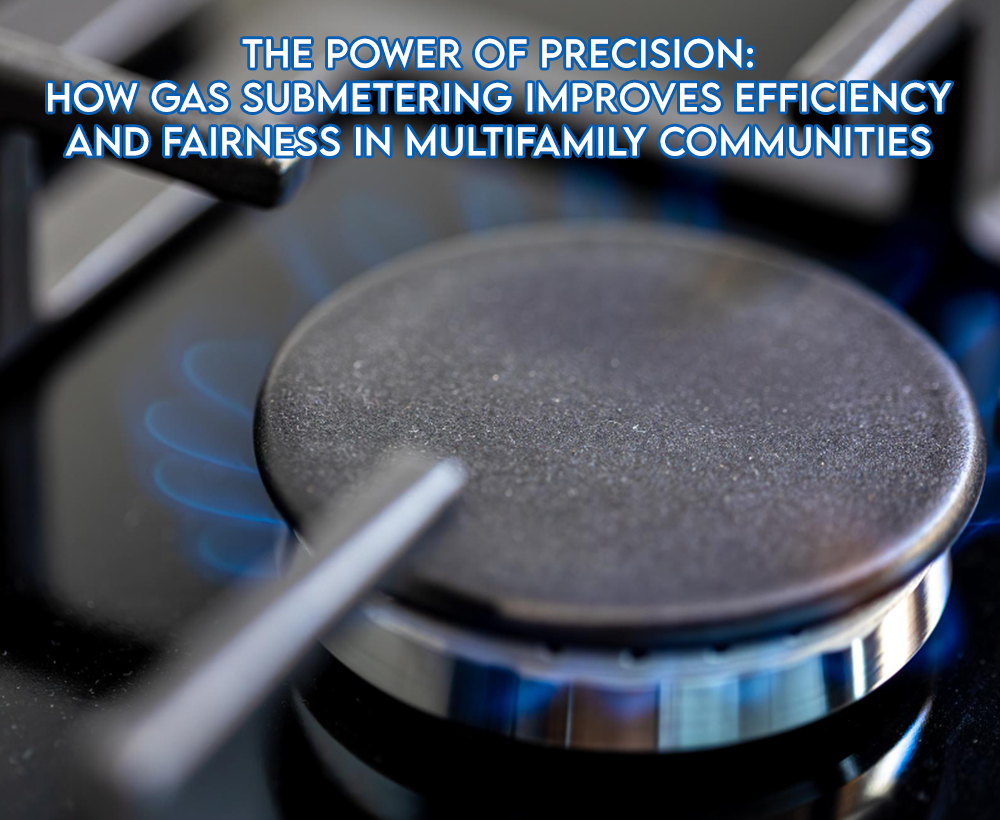
Mastering Utility Billing Compliance: A Guide for Multifamily Operators
July 17, 2025
Eco-Friendly Benefits of Submetering Water, Gas, and Electric Utilities
August 7, 2025Utility Billing Benchmarking in Multifamily: A Strategic Approach to Cost Control and Asset Optimization
In the multifamily housing sector, utility billing benchmarking has emerged as a vital component of strategic asset management and financial performance. As utility costs continue to escalate, property managers, owners, and investors must gain a clear understanding of their utility usage, how it compares to industry norms, and where cost-saving opportunities exist. Benchmarking delivers actionable insights that help identify inefficiencies, support data-driven decisions, and enhance profitability.
What Is Utility Billing Benchmarking?
Utility billing benchmarking is the process of evaluating a property’s utility consumption and costs—such as electricity, water, and gas—against comparable multifamily properties. By analyzing this data, property managers can determine whether their property is operating efficiently or incurring excessive expenses.
This comparative analysis provides a diagnostic lens, revealing areas where usage exceeds norms and guiding improvement efforts. Ultimately, benchmarking empowers property stakeholders to take proactive steps to reduce waste, improve performance, and increase the property's bottom line.
Why Benchmarking Matters in Multifamily Housing
Utility expenses often represent a substantial share of a multifamily property's operating costs. Benchmarking provides key benefits, including:
1. Identifying Cost-Saving Opportunities
Benchmarking uncovers patterns in utility usage that may otherwise go unnoticed. For example, if water consumption is higher than similar properties, it may indicate leaks or outdated fixtures. Targeted upgrades can then be implemented to improve efficiency and lower utility expenses.
2. Enhancing Property Value
Reducing utility costs can directly improve a property’s net operating income (NOI). Since multifamily valuations are often tied to NOI, strategic cost management through benchmarking can significantly increase property value.
3. Supporting Sustainability Initiatives
Benchmarking helps align utility usage with sustainability goals by identifying areas of waste and promoting conservation efforts. This commitment to environmental responsibility can enhance a property’s appeal to residents and investors alike.
4. Enabling Data-Driven Decision Making
Accurate utility data removes the guesswork from operational decisions. Benchmarking supports informed planning—whether investing in energy-efficient upgrades or optimizing maintenance schedules—leading to better long-term outcomes.
5. Improving Transparency and Reporting
Benchmarking provides stakeholders with transparent, evidence-based reporting. Many jurisdictions are also enacting benchmarking mandates, making early adoption beneficial for regulatory compliance.


Steps for Effective Utility Billing Benchmarking
To fully leverage benchmarking, multifamily operators should follow a structured process:
1. Data Collection
Gather comprehensive utility data—electricity, water, and gas usage—for each property in the portfolio. Accurate, up-to-date information is essential for meaningful analysis.
2. Define Benchmarks
Establish relevant benchmarks using metrics such as cost per unit, usage per square foot, or comparisons to industry averages. These standards provide the context necessary for performance evaluation.
3. Analysis and Comparison
Compare your property’s performance against established benchmarks. Look for deviations in key metrics such as total consumption, unit costs, and seasonal patterns.
4. Set Improvement Goals
Identify underperforming areas and establish clear, measurable objectives. For instance, if energy use is above average, a goal might include upgrading to energy-efficient HVAC systems or LED lighting.
5. Ongoing Monitoring and Adjustments
Utility usage varies with seasonality, occupancy, and operational changes. Regular monitoring—monthly, quarterly, or annually—helps ensure continued progress and allows timely adjustments.
Technology’s Role in Benchmarking
Technology is a game-changer for utility benchmarking. Advanced platforms simplify data collection, automate reporting, and provide real-time insights. These systems centralize utility data, flag inefficiencies, and support ongoing optimization.
At Think Utility Services, our analytics tools equip multifamily stakeholders with detailed reporting and performance comparisons across properties. This enables efficient benchmarking that supports strategic decision-making without the burden of manual data analysis.
Technology also enhances accuracy, reduces administrative overhead, and empowers managers to focus on solutions rather than data gathering—making benchmarking a seamless part of everyday operations.
Conclusion
Utility billing benchmarking is no longer a luxury—it’s a necessity for multifamily properties aiming to improve cost control, increase asset value, and meet sustainability goals. By understanding how a property’s utility performance stacks up, managers can identify inefficiencies, implement targeted improvements, and foster long-term success.
In today’s competitive real estate landscape, leveraging utility data for benchmarking gives multifamily operators the edge they need to drive efficiency, enhance transparency, and ensure continued profitability.




